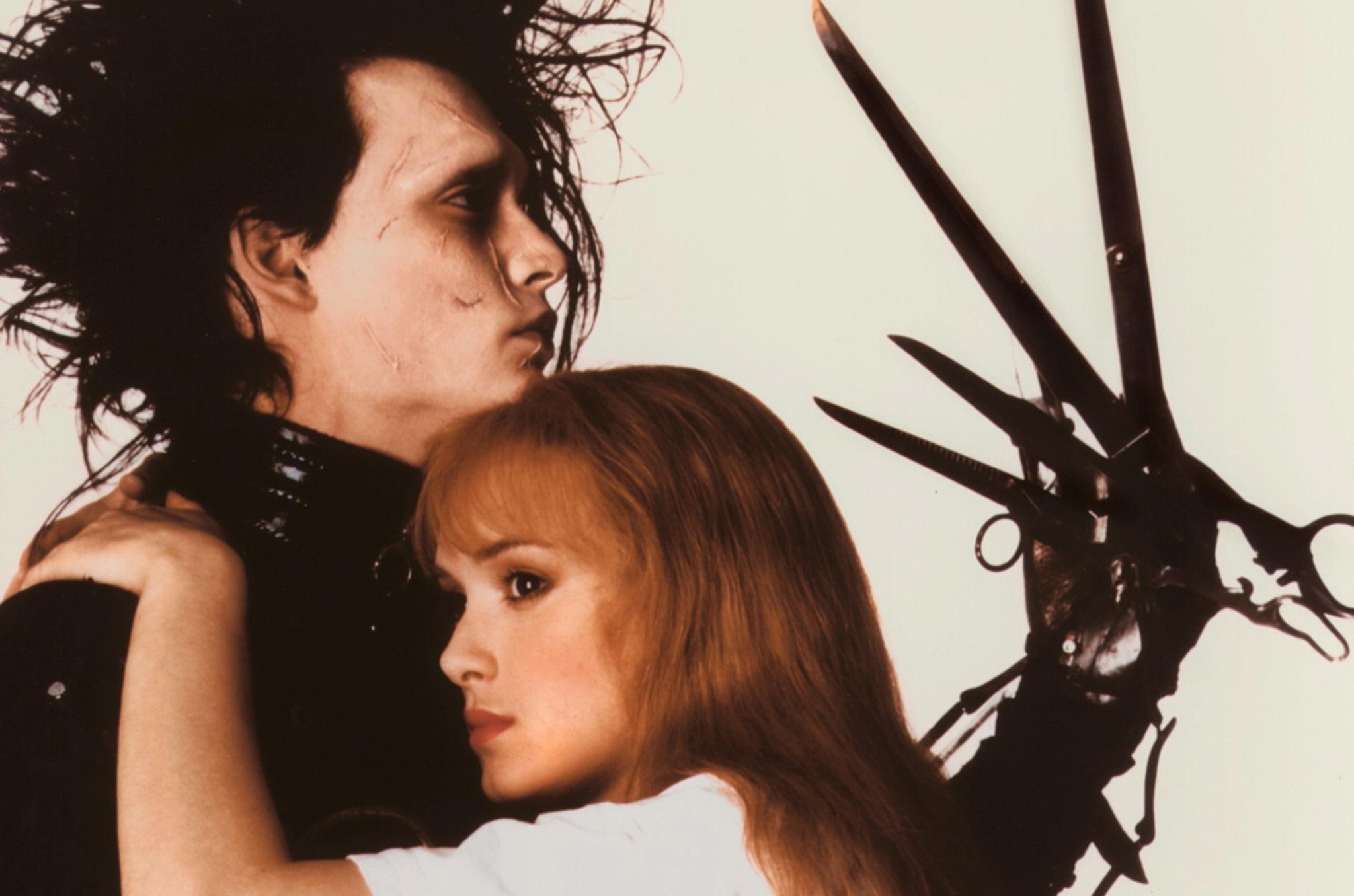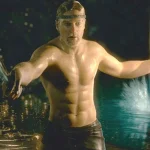Edward Scissorhands (1990)

Directed by Tim Burton and released in 1990, “Edward Scissorhands” remains a timeless masterpiece that transcends genres, blending elements of fantasy, romance, and dark comedy into a poignant narrative. Starring Johnny Depp in the titular role and Winona Ryder as his love interest, the film unfolds in a visually stunning world that captures the imagination and tugs at the heartstrings.
“Edward Scissorhands” transports viewers to a quaint suburban town characterized by pastel-colored houses and perfectly manicured lawns, a stark contrast to the Gothic castle where Edward resides. Created by an eccentric inventor (Vincent Price), Edward is an unfinished artificial man with scissors for hands, isolated from society until he is discovered by Peg Boggs (Dianne Wiest), a kind-hearted Avon saleswoman.
As Peg introduces Edward to her family and neighbors, including her daughter Kim (Winona Ryder), Edward’s innocence and exceptional topiary skills captivate the community. However, misunderstandings and prejudices arise, exacerbated by Edward’s unconventional appearance and inability to conform to societal norms.

At its core, “Edward Scissorhands” explores profound themes of identity and belonging. Edward grapples with his own sense of self-worth and yearns to be accepted for who he is beyond his physical appearance. His gentle nature and artistic talents contrast sharply with the superficiality and cruelty of those who initially embrace him out of curiosity but later reject him out of fear.
The heart of the film lies in Edward’s budding relationship with Kim, Peg’s compassionate daughter. Their connection transcends physical barriers, illustrating the transformative power of love and acceptance. Through Kim, Edward experiences moments of joy and heartbreak, navigating the complexities of human emotions and the limitations imposed by his unique condition.
Tim Burton’s visionary direction infuses “Edward Scissorhands” with a distinctive visual style characterized by Gothic aesthetics and whimsical charm. The juxtaposition of Edward’s dark, angular appearance with the colorful suburban setting creates a visual metaphor for the clash between individuality and conformity.

Johnny Depp’s portrayal of Edward is a tour de force, conveying a delicate balance of vulnerability, innocence, and quiet strength. Through nuanced expressions and physical gestures, Depp brings depth to a character who communicates more through actions than words, evoking sympathy and empathy from audiences.
Since its release, “Edward Scissorhands” has garnered critical acclaim and achieved cult status for its emotional resonance and thematic richness. The film’s exploration of societal alienation, the nature of beauty, and the quest for acceptance resonates with viewers of all ages, cementing its place in cinematic history as a timeless fable for the outsider in all of us.

In conclusion, “Edward Scissorhands” (1990) stands as a testament to Tim Burton’s visionary storytelling and Johnny Depp’s transformative performance. Through its enchanting narrative, stunning visuals, and universal themes, the film invites audiences to reflect on the complexities of human relationships and the power of compassion in a world that often values conformity over individuality.
Prepare to be enchanted and moved as you journey into the whimsical yet poignant world of “Edward Scissorhands,” where scissors become symbols of both creativity and isolation, and where love transcends all boundaries, even those as sharp as blades.











